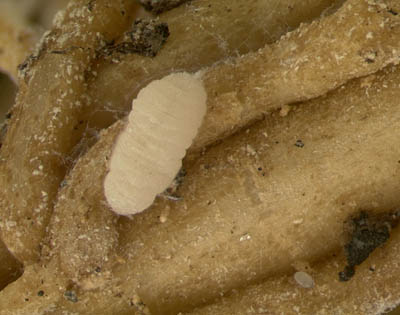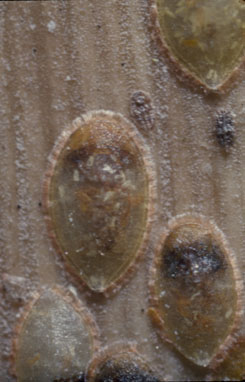
Photo credit: Divison of Plant Industry
The information on this page is copyrighted, but it may be used freely for educational purposes if cited as follows:
Hodges, G. 2003. Non-armored scale insects on bromeliads. Published on WWW at http://BromeliadBiota.ifas.ufl.edu/scalehodges.htm
Asterolecaniidae-Pit Scales
The Asterolecaniidae, or pit scales, are an unusual group in which many members can cause "pits" to occur on their host plants. Many resemble the soft scales in appearance, being colored light tan to brown to green in color, slightly convex to convex in lateral profile, and being 2-6 mm long. Many are considered as damaging pests on their hosts.
Common species on bromeliads
Asterolecanium bambusicola Boisduval
This is one of the more common pit scales found on various bamboo species. The coloration of this scale is light green to light brown with a cream colored to orange margin. The approximate size of this pit scale is 2-4 mm long.

Asterolecanium epidendri Bouché (orchid pit scale)
This pit scale is very common on orchids and occasionally found on bromeliads. They tend to be brown to yellowish-tan in color. The orchid pit scale is approximately 1-3 mm long.
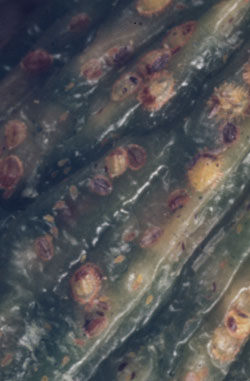
Coccidae-Soft scales
Unlike armored scales, soft scales are not covered by non-living waxy armor. Instead, they are generally covered by a thin layer of wax which is excreted by various pores located on the insect body. There is much morphological variation within the family. In many cases the bodies of the females are convex in profile but some species have a flat lateral profile.
Reproduction can vary depending upon species. Some require males whereas other species reproduce through parthenogenesis (asexual reproduction). General life cycle for an individual is from egg-crawler-second instar-third instar-adult. Females are often times sedentary and become affixed to a feeding location.
Coccus hesperidum Linnaeus (Brown soft scale)
The brown soft scale is a polyphagous pest species that is common to many ornamental plantings within Florida. The general appearance of this scale is a small (2-5 mm long) light brown "disc" located on the leaves or stems of its hosts. The body shape is generally oval and may range from flat to slightly convex in profile.
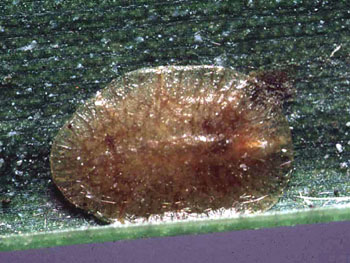
Ortheziidae-Ensign scales
Ensign scales are some of the more ornate scale insects that people encounter. The females are generally covered with white waxy plates and often times carrying white ensign-like ovisacs (cottony masses containing eggs) attached to their bodies.
Orthezia tillandsiae Morrison
This orthezid is generally found on the leaves of bromeliads in the genus Tillandsia. They are easy to spot and appear as small, grayish white, mobile tubes. The economic importance is unknown but it appears that most Tillandsia can support small populations without too much of an effect on the host plant.
Pseudococcidae-Mealybugs
Mealybugs derive their name from the fine powdery or "mealy" wax that is secreted by specialized pores on their bodies. Some species will have wax filaments arising from the lateral margins and/or the posterior end of their body (Dysmicoccus, Planococcus, Pseudococcus). However, there are some species which lack these wax filaments (Rhizoecus sp.). Many species of mealybugs are considered significant plant pests that can cause wilting, chlorosis and occasionally death of the host plant.
Common species on Bromeliads
Dysmicoccus brevipes (Cockerell)-Pineapple mealybug
The pineapple mealybug is a fairly common mealybug within Florida and occurs on a wide range of host plants where it may be found both above and below ground. Like other mealybugs, pineapple mealybug is covered with a fine white wax. It has lateral filaments (rays) arising from the body.
Dysmicoccus mckenziei Beardsley
This mealybug has no common name and is prevalent in Central and South America on various bromeliads. It closely resembles the pineapple mealybug but is slightly larger and has longer filaments arising from the abdomen. It is generally associated with the aerial portions of the host plant.
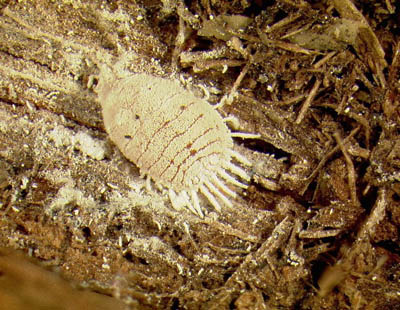
Ferrisia virgata (Cockerell)-Striped mealybug
The striped mealybug is easy to recognize with the two dark stripes running lengthwise along the dorsum, lacking lateral wax filaments and having crystalline rods arising from the body. This mealybug is very common in Florida on a wide range of host plants.
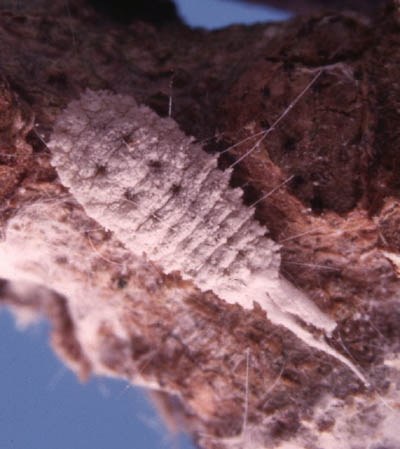
Planococcus citri (Risso)-Citrus mealybug
Citrus mealybug is a common pest of many ornamental plants as well as citrus within Florida. It is easily recognized by having short "wedge-shaped" rays occurring around the margin of the body and the presence of a single dark stripe running lengthwise along the dorsum. It is found on the aerial portions of the host foliage.
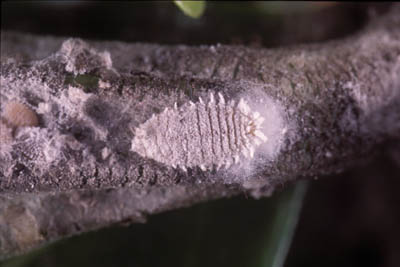
Pseudococcus maritimus (Erhorn)-Grape Mealybug
The grape mealybug has been known to be a pest of a wide variety of plants. It is easy to recognize with lateral waxy filaments arising from the margins of the body as well as two long waxy filaments arising from the abdomen (rear) of the insect. The overall color of this mealybug is white to yellow with a gray to dark stripe running three quarters the length of the body.
Rhizoecus americanus and Rhizoecus floridanus
Mealybugs in the genus Rhizoecus feed on the roots of their host plants and are typically hard to control. They are generally very small (0.5 to 1 mm), white and lack lateral filaments. The first thing growers will notice is the presence of white wax on the roots (or below ground plant parts). Generally, the mealybugs are relatively close to these areas.
